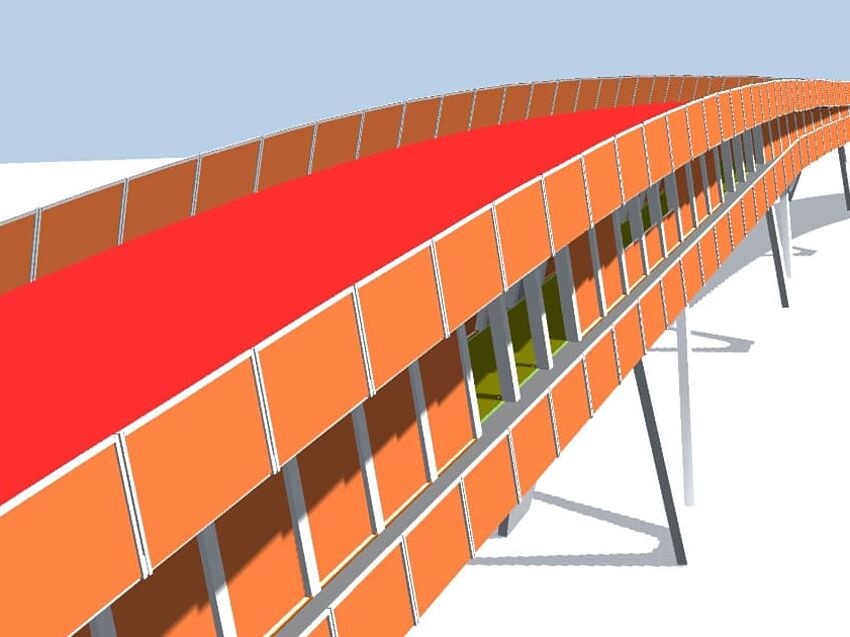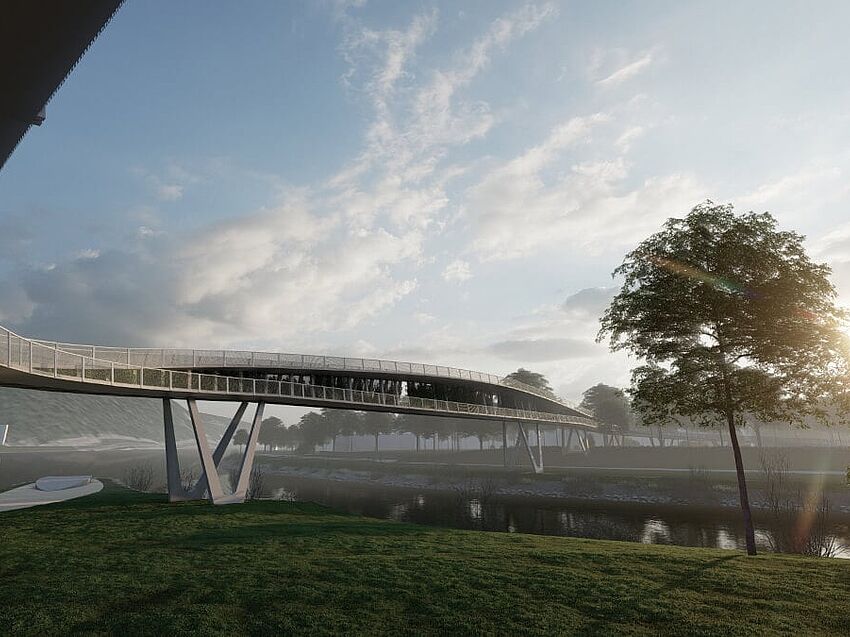ALLPLAN 2025-1: Smarter Workflows and Stronger Collaboration
Establishing an efficient workflow is a key component of delivering construction projects on time and on budget. With Building Information Modeling (BIM) emphasizing the increasing importance and value of data within a project, being able to develop a workflow that seamlessly shares and organizes all project information is a powerful asset. With a model collaboration platform like ALLPLAN Bimplus, existing workflows can be streamlined for optimum efficiency. For example, the following five workflows have all been improved as a result of a data-driven workflow through Bimplus.
Multidisciplinary Communication
Few construction projects are designed and delivered by one company, and even, those that are still have multiple disciplines working on them at any given time. In the past, large and lengthy face-to-face meetings would be required to share and discuss ideas over many printed copies of the project plans, making it difficult to share ideas and ensure that all issues were identified and addressed. Now teams are used to working with 3D models, and cloud-based communication enables discussions using a common multidisciplinary model.
Bimplus enables the sub-models from each discipline to be uploaded to a central location and viewed on a common platform, irrespective of the software used to create the model. Every discipline can see the impact of their work on other parts of the project in 3D, instead of trying to guess from a 2D drawing. Notes and comments can also be made on the federated model and assigned to the relevant person, so nothing gets missed. As a result, communication is significantly improved.
Work Seamlessly with Different CAD Models
Improved communication also affects collaboration. Using a platform like Bimplus, clashes between different elements can be detected more easily and much earlier in the design process, where any issues are less onerous to rectify. This way, every separate discipline or team can contribute to the project in a collaborative and transparent way. While being able to view and collaborate on the federated 3D model is helpful for discussing and sharing ideas, it can also be downloaded as a referenced model and used as a base for any further work on your own model.
Effortlessly Implement BIM Requirements
The BIM requirements that are specified by the client – in a document such as the Employer’s Information Requirements (EIR) – can be challenging to achieve when using multiple AEC programs. Bimplus makes this more straightforward with various features, such as the ability to define Property Templates which can then be synced in ALLPLAN 3D modeling software and filled in. There is also an Excel plugin which allows multiple properties to be quickly and easily modified. This makes fulfilling the BIM Execution Plan (BEP) much simpler and easier to adhere to throughout the project, as well as making it easier to react if there are changes.
Control Issue Management and BCF Workflows
One workflow which particularly suffers from poorly managed data is issue management. Without a good process, issues can quickly become lost and left unaddressed until the problem is discovered on site and is much more difficult to rectify. Controlling issues is easier when tasks can be assigned and tracked openly, so everyone is aware of current progress. With Bimplus, project team members can easily create an issue, incorporate BIM Collaboration Format (BCF) files into the common data environment using either the Issue Manager from ALLPLAN or Bimplus, and assign the tasks to those on the project team who are responsible. In turn, those who need to action the issue then receive the tasks in ALLPLAN, right where they require the information.
Integrate Productively with Structural Analysis Systems
Structural analysis has often been a workflow that has sat outside the rest of the design process. The 3D geometric model normally needs to be recreated in specialist structural analysis software before it can be analyzed, and the results then fed back into the geometric model. SCIA Autoconverter avoids this duplication of work and instead uses a controlled automated process to convert the geometric model into an analysis model. With integrated change management, revisions to the analysis model are easily managed and automatically updated in the geometric model. When combined with Bimplus, the structural analysis workflow is integrated into the overall design workflow, ensuring that all parties are using the most up-to-date version of the model.
Achieving Optimum Efficiency
Efficient workflows that ensure open and transparent access for all stakeholders maximizes the value of the project data. In turn, productivity and collaboration are significantly enhanced, and targets such as delivery dates and budgets are easier to achieve. Bimplus can help achieve streamlined workflows and turn the dream of an efficiently run projects into a reality – learn more here.




